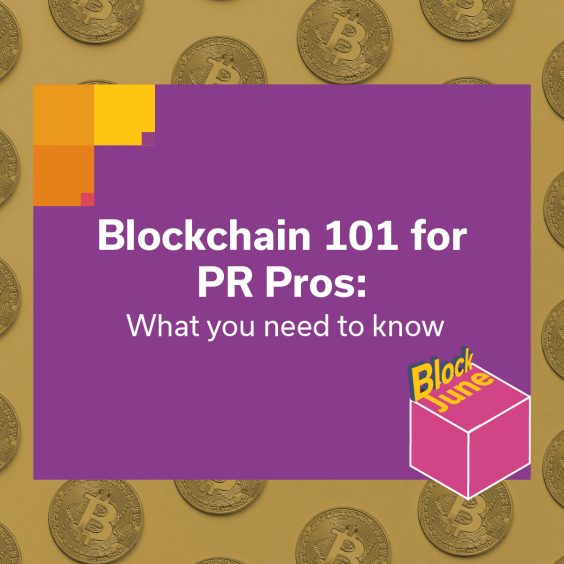Influencer marketing is often defined as a form of marketing where brands work with influential people to help build relations with target audiences on behalf of a company. This has been in practice for decades, and marketers have frequently worked with celebrities and industry thought leaders to promote their products or services. So, while the concept of ‘influencer marketing’ is not totally new, the way it’s executed has evolved dramatically over the past five years – especially for b2b marketers – with the emergence of new media channels and the widespread adoption of social media.
Neglecting to include influencers in your marketing mix can be a sorely missed opportunity. In some cases, the return on investment of these programs can significantly outweigh the results of online advertising. In fact, Nielsen Catalina Solutions partnered with TapInfluence and WhiteWave Foods to publish a case study, which proved influencer marketing can deliver $285 incremental sales per 1,000 views. Getting these kind of results, however, takes work. Much like dating, it requires patience and time to identify influencers who can be those ‘right matches’ to your company.
Here are five top tips to consider when rolling out a successful influencer marketing program:
1. Authenticity makes for a long-lasting relationship
According to a study conducted by Olapic and CITE research, 66 percent of 4,000 respondents noted they followed specific influencers because their content was aligned with their own interests. Therefore, when influencers and companies join forces, it’s important to allow influencers to remain authentic to who they are while they convey your brand’s key messages.
There are some instances where influencers can appear disingenuous because they agree to seemingly any opportunity to quickly acquire fame and money. This doesn’t work, and potential customers can quickly see through these types of scams. Remember Scott Disick’s sponsored Instagram post fail? The sloppy copy/paste job on the picture’s caption made it immediately apparent that Scott was not really an avid user of the Bootea shake product. It’s more than likely that the marketing team didn’t do the necessary research to identify an influencer that would find value in their product. Instead, they appear to have chosen the person with the largest social following. Don’t be that company.
Rather, you should build trust with an influencer as a representative of your brand. This can help foster a long-lasting relationship, creating an ally who has an open line of communication with your target audiences.
2. There are lots of fish in the sea, but you only need a few
It’s more important to make sure you’re engaging with the right influencers instead of all the influencers in your industry or space. According to Mondo, marketers should consider reach, resonance and relevance during an influencer search. By doing the proper research, you should be able to determine the scope of an influencer’s social following and whether they would find your product/service important to their lifestyle and relevant to their audience’s interests.
Tools like Followerwonk and Buzzsumo can help during the research phase. Like most tools, however, they require a human to go through the data to verify whether individuals truly are influencers. This is especially true in b2b marketing, as influencers tend to be more niche and a little harder to identify. That said, we often recommend drawing up a small list of no more than 10 to 15 well-vetted influencers to focus activity on.
3. Choosing the channel to share your relationship
Selecting the right channel to share content requires careful consideration. Before making your ‘relationship’ public, you want to make sure you’re identifying an influencer with an authoritative voice on the channel and with the audience you’re attempting to reach. Demographics can vary significantly on each platform. As an example, Sprout Social reports 79 percent of adults use Facebook while only 32 percent of adults use Instagram. This shouldn’t be surprising as different social channels often serve different purposes. For instance, Pinterest is for young parents and millennials, LinkedIn is for professionals aiming to network, Twitter and Facebook are mainly used for connecting with friends, sourcing news, and keeping up with colleagues, while YouTube is filled with a wide range of individuals expressing opinions. So, before you start developing content with an influencer, it’s imperative to make sure they’re going to connect with the end users on your radar by using the most appropriate channel.
4. Clarity and understanding: essential to making influencer marketing work
Once you’ve decided to work with an individual, it’s important to clearly define all parts of the agreement in a contract to set expectations from the very beginning of the relationship. The American Marketing Association notes that a good influencer agreement specifies activities expected of the influencer, emphasizes exclusivity, includes a well-crafted termination provision, and is in compliance with FTC or similar guidelines.
This is also the stage where you discuss compensation with an influencer – whether it be monetary or in-kind. More frequently, b2b influencers are expecting monetary compensation for their services. However, there may still be some opportunities for in-kind, especially if the company has a larger social following to bring visibility to an influencer who is up and coming. Influencers may also be open to in-kind compensation if they’re fans of the company already, or if the product or service is very expensive.
Typically, an organization’s legal department is involved in contract negotiations to ensure all I’s are dotted and T’s are crossed. Each contract should include a strategy and set of objectives for the influencer to fulfil. All measurement metrics should be captured here, too.
5. Did I make a mistake? When to jump ship
Hopefully most relationships work but there can be red flags and doubts when working with an influencer. If they ‘cheat’ by sharing content about the competition, deliver content that isn’t up to par, or miss agreed-upon goals, then it may be time to break ties. While this is less than ideal, it can help your company know what to watch out for as you source new influencers to engage.
All in all, a ‘perfect match’ is someone who finds value in the products and services your company offers and communicates that value to their followers. Finding these folks, however, takes time, effort, and due diligence. If you’re looking to incorporate an influencer marketing program into your next campaign, contact us at hello@rlyl.com.




